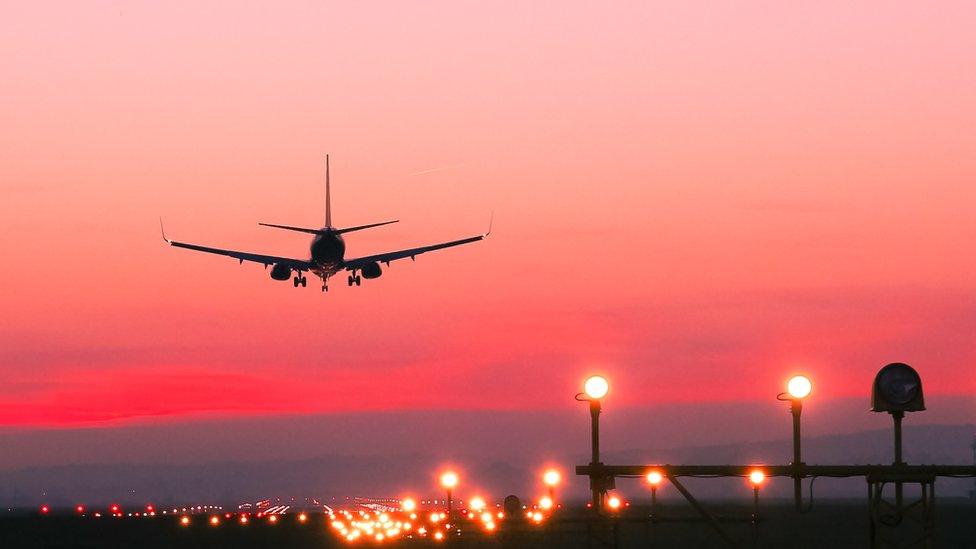Inmarsat lays big satellite order with Airbus
- Published
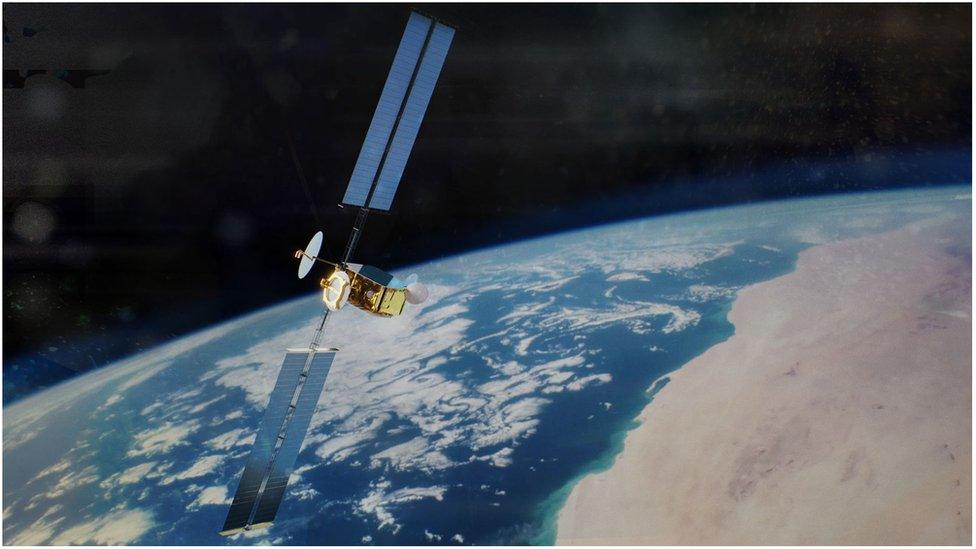
Artwork: The satellites benefit from R&D sponsored by the European, UK and French space agencies
London-based Inmarsat, the UK's largest satellite operator, has announced a major expansion of its network.
The firm is buying three new spacecraft to augment its Global Xpress system, which provides connectivity to on-the-move and out-of-the-way users, such as those on ships, planes and oil rigs.
European aerospace giant Airbus will build the satellites.
Inmarsat says their novel technologies will make it easier and faster to react to market developments.
For example, rather than taking up a "fixed" position in the sky, as is the case with all the company's current platforms, these new spacecraft will be designed with the expectation that they might have to move around to match demand.
Their telecommunications payloads will also be fully reconfigurable through software updates - not something that is generally practised today.
Airbus aims to have the new satellites ready for launch in 2023 and says their compact and stackable design means they could conceivably go up on the same rocket.
Neither the manufacturer nor the operator are revealing a price. Inmarsat says merely that the cost will fit within its capital expenditure schedule.
It has a contract for three platforms but an option for more in the future.
Inmarsat made financial headlines earlier this month when its shareholders accepted a $3.3bn (£2.6bn) take-over by a group of buyers known as the Bidco consortium.
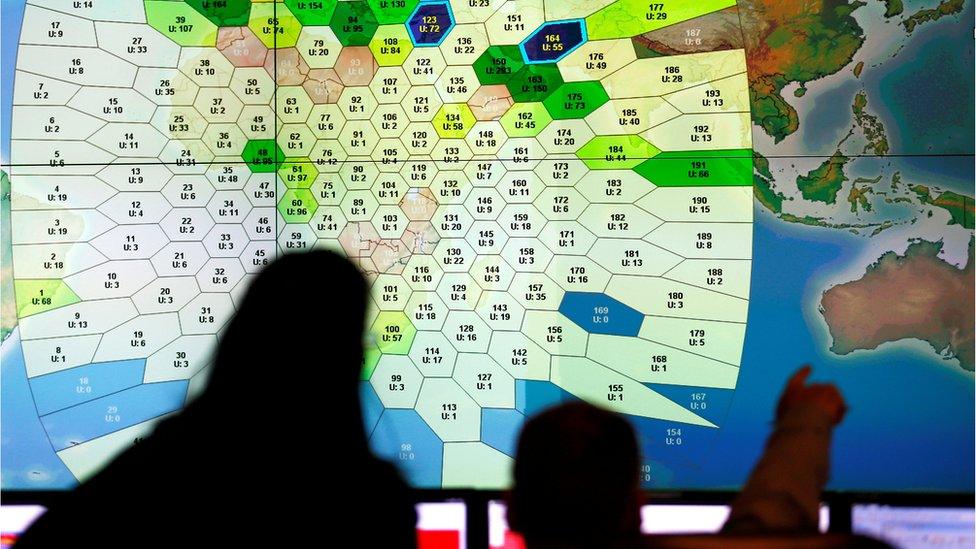
Inmarsat control room: The company is looking for a more lithe response to market demand
What's different about these satellites?
The new telecommunications satellites are a brand new concept that Airbus calls "OneSat".
This incorporates R&D innovations that were sponsored by the European, UK and French space agencies.
The satellites are described as modular in design and are said to be much quicker to assemble than previous platforms.
They are also "all electric", meaning everything onboard is solar-powered, including their propulsion systems. These use highly efficient ion engines to control the movement of the spacecraft.
But more significant still is the adaptability of the design.
Traditional large satellites are configured on the ground for specific tasks. This might mean, for example, transmitting only on certain radio frequencies with shaped antennas to carve out the necessary ground "footprint".
The smaller OneSats, on the other hand, can have their coverage, capacity and frequency all altered through software amendments.
Their antennas can also be re-shaped electronically.
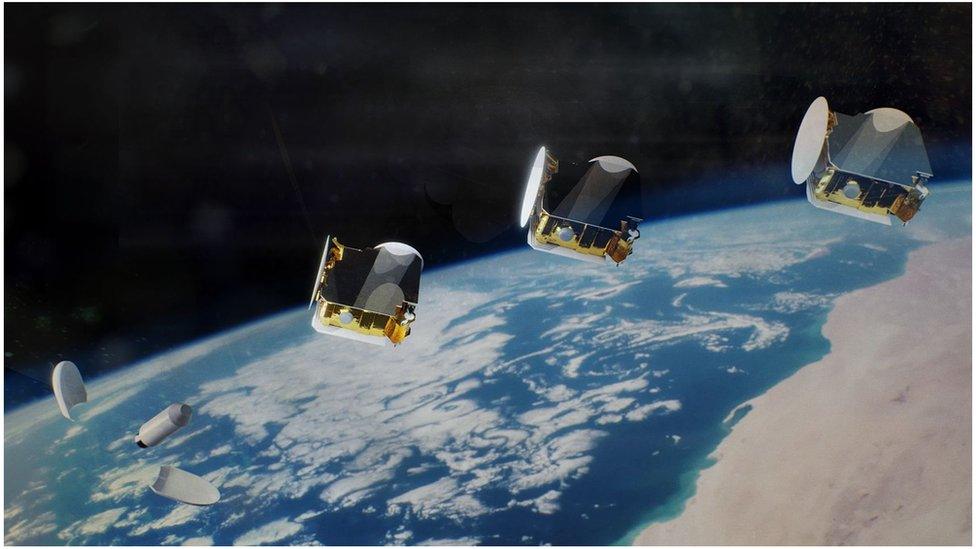
Artwork: It's possible the three compact satellites could be launched together, Airbus says
Why is this approach so important for Inmarsat?
Inmarsat took a decision at the beginning of the decade to refocus much of its business on communications links that work in the Ka part of the radio spectrum.
These faster connections have been provided through a network the space company calls Global Xpress, or GX - and they've been very popular with customers.
The firm has already launched four large Ka satellites to service GX and has a fifth one on order.
The new trio will bring further additional capacity, but Inmarsat also intends to use the Airbus spacecraft in a different way.
They will not sit fixed over a specific region with a specific job for their entire lives like the current generation.
Rather, the company sees these latest GX spacecraft as a kind of rapid reaction force that can be shifted around the globe to overlay existing services and meet new market trends, wherever they arise.
"Our business can be very lumpy geographically," explained Inmarsat chief technical officer Peter Hadinger.
"Consider the straits where maritime traffic converges; likewise the major international airports of the world where flights go in and out. And our business is also lumpy in time because as we know airlines fly to a schedule that has 'flocks' of them going from one continent to another in roughly the same timeframe.
"We need to be able to adapt and move our capacity around to meet the demand where it's needed and at the time it's needed," he told BBC News.

The requirement for satellite telecommunications is lumpy in space and in time
In the past, Inmarsat has tended to purchase a set of big spacecraft on a generational basis every seven years or so. The flexible nature of the new "production scale" OneSats means more frequent, smaller orders will likely be made, to take advantage of the latest technological developments that keep the network as a whole as modern as it can be.
"These new satellites individually are much lower cost than our previous satellites," said Inmarsat CEO Rupert Pearce.
"That means we can take more calibrated risks, perhaps focusing on particular niche markets, or on particular regions or on a particular customer. A satellite just for the military, for example.
"It's about speed and agility, and that's what the future of this company is all about."
Airbus will prepare the various modules that go into the production of the satellites at its centres across Europe, but the UK factories at Portsmouth and Stevenage are sure to have key roles.
Thursday's announcement will be very welcome news to those factories given how flat orders have been in the sector over the past few years.
- Published16 May 2017
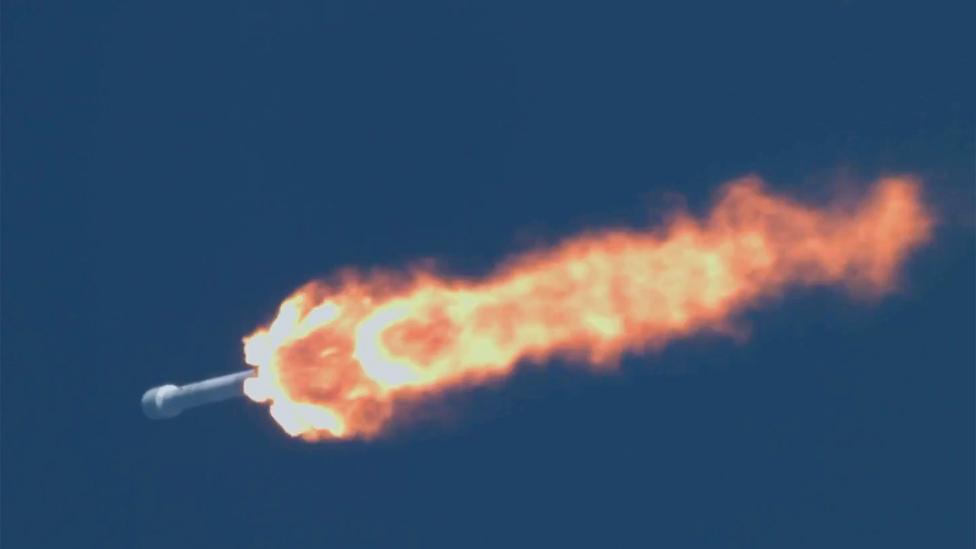
- Published6 March 2018
